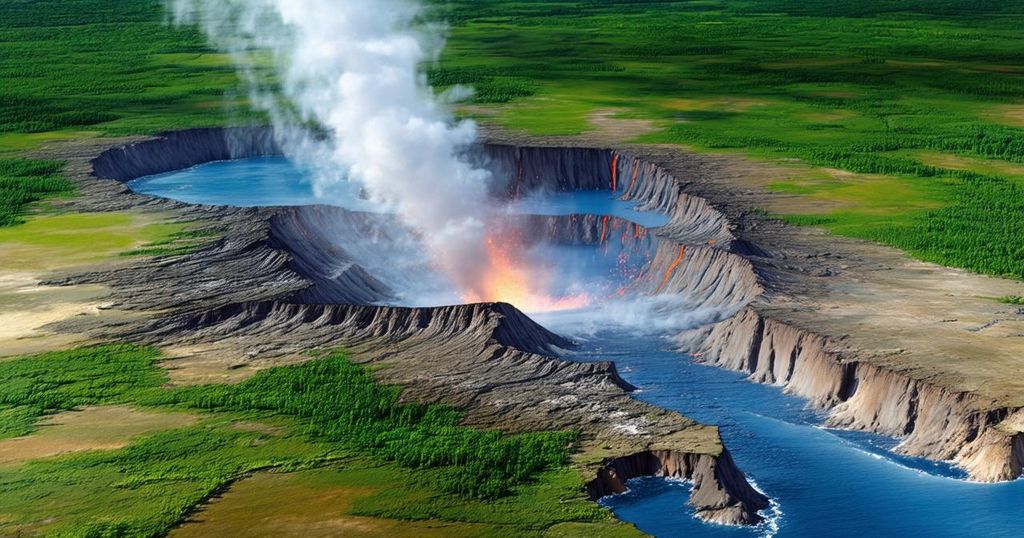The Strongest Earthquakes Ever Recorded and Their Devastating Impact

The most powerful earthquakes in history are the Valdivia Earthquake (1960, magnitude 9.5), the 1964 Good Friday Earthquake in Alaska (magnitude 9.2), the 2004 Sumatra-Andaman Earthquake (magnitude 9.1), the 2011 Tohoku Earthquake in Japan (magnitude 9.1), and the Kamchatka Earthquake (1952, magnitude 9.0). These events highlight the immense destructive potential of seismic activity and the need for advanced preparedness measures.
The strongest earthquakes recorded in history reflect the remarkable power of geological processes that shape our planet. Among these, the highest magnitude earthquake is the Valdivia Earthquake, also known as the Great Chilean Earthquake, which occurred on May 22, 1960. This catastrophic event recorded a magnitude of 9.5 and caused extensive destruction throughout the Bio-Bio region of Chile. The intense shaking, lasting approximately ten minutes, resulted in significant loss of life, with around 1,600 fatalities and about 3,000 injuries. Furthermore, nearly two million individuals were displaced. The earthquake also generated a series of tsunamis that struck various Pacific coastal regions, including Hawaii, Japan, and the Philippines, inflicting additional casualties exceeding 200. As a further consequence, the quake triggered the eruption of Chile’s Cordón Caulle volcano, which compounded the destruction in the vicinity. Following the Valdivia Earthquake, the second most powerful recorded earthquake was the Good Friday Earthquake in Alaska, occurring on March 27, 1964, with a magnitude of 9.2. While the death toll was significantly lower at 131, due to the sparse population density in the affected areas, the quake devastated Anchorage and surrounding localities. The damage was primarily caused by ground subsidence and the tsunami that ensued, which affected coastal areas from Alaska down to California. Next on the list is the 2004 Sumatra-Andaman Earthquake, measuring 9.1. This devastating earthquake took place on December 26, 2004, off the coast of Sumatra and was responsible for one of the deadliest tsunamis in history, claiming over 230,000 lives across more than a dozen countries, including Indonesia, Thailand, and Sri Lanka. The event highlighted the need for advanced tsunami warning systems and robust disaster response protocols globally. The 2011 Tohoku Earthquake in Japan also measured 9.1 and occurred on March 11, 2011. The earthquake caused tremendous damage over a six-minute period and resulted in approximately 18,000 fatalities. It also inflicted a nuclear disaster at the Fukushima nuclear power plant and produced tsunami waves that affected regions as far reaching as the Hawaiian Islands and South America. This calamity underscored the necessity for improved earthquake-resistant infrastructure and community preparedness measures. Lastly, the Kamchatka Earthquake of November 4, 1952, which recorded a magnitude of 9.0, further exemplifies the immense destructive potential of seismic events. The earthquake impacted the Kamchatka Peninsula in Russia, resulting in a death toll ranging between 10,000 and 15,000. The tsunami generated by this quake reached the Aleutian Islands and caused significant damage in Hawaiian territories, costing approximately $17 million. The town of Severo-Kurilsk was heavily affected, losing a substantial portion of its population; however, survivors took precautionary measures by relocating their settlement to a safer elevation.
The topic of the strongest recorded earthquakes is crucial in understanding the dynamics of seismic activity and its potential ramifications on human society. Earthquakes are classified according to their magnitudes measured on the Richter scale, which quantifies the energy released during such geological events. This quantitative assessment aids in categorizing earthquakes and constructing safety protocols that can mitigate damage and save lives in seismically active regions. Additionally, studying past earthquakes provides invaluable insights into improving preparedness and response strategies for future seismic occurrences.
In summary, the five strongest earthquakes ever recorded exhibit the devastating effects that seismic events can impose on affected regions and highlight the necessity for scientific understanding and technological advancements in earthquake prediction and disaster response. The profound impacts from these historical earthquakes emphasize the importance of enhancing community resilience, infrastructure integrity, and global cooperation in response to natural disasters.
Original Source: science.howstuffworks.com








